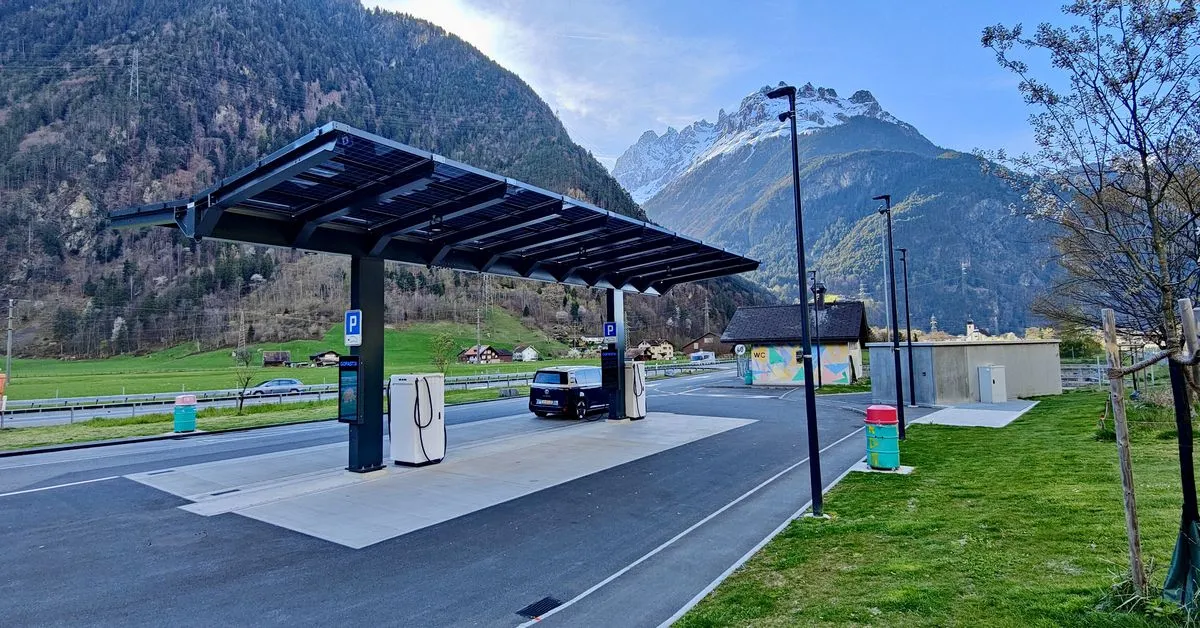- cross-posted to:
- futurism@lemmy.ca
- technology@lemmy.world
- europe@feddit.de
- cross-posted to:
- futurism@lemmy.ca
- technology@lemmy.world
- europe@feddit.de
EU passes law to blanket highways with fast EV chargers by 2025::The chargers must be placed every 60km (37mi) and allow ad-hoc payment by card or contactless device without subscriptions.



Removed by mod
There are chargers now that provide 20km of range for every 60 seconds your car is plugged in.
So if you stretch your legs, get a bite to eat, go to the toilet, etc you’ve added enough range to give your car another five hours of range.
And if those chargers are every 60km along the highway… then you’ll be able to stop when it’s convenient for you. That’s an opportunity to stop every 30 minutes.
But the reality is most people will charger their EV while they’re at home or at work. And therefore it will just always be full, you will only ever need to stop on long road trips. Realistically, how many times a year do you go on a road trip? Once? Twice? Not at all?
That does kinda worry me. If I’m on a road trip, I don’t want to wait while the guy ahead of me stretches his legs and grabs a bite to eat before I can even start charging.
That sounds great! Makes me even more optimistic for EVs!
It’d be fine if there were more home charging outlets. If you have to rely on a fast charging station, you should not get an EV.
Removed by mod
“jUsT uSe sTrEeT cHaRgErS”. I had a conversation like this here a while back. That person just didn’t accept that no, the city won’t spend millions of Euros on street chargers for apartment dwellers.
If there is demand and they can make money off of them, they absolutely will.
no, cities will send millions on street chargers if there is a demand for them,
My city can’t be assed with proper bike lanes, who do you think will pay for those chargers? In fact, who will pay for those EU mandated ones?
That’s the fun part, it will come out of the cities budget.
and I’m sorry that you have your NIMBYism, but sometimes the needs of the many trumps the wants of the few
And I’m sorry you have your racism but not all cities are as rich as yours.
Now how does it feel to falsely accuse someone? Not pleasant isn’t it?
Agreed. There needs to be a combination of incentives for building owners and also more basic level 1 street chargers (although a type F outlet is twice the charge of the lowest level 1 US charger). They could easily be integrated into parking meters. Those would give you about 10km/h. Not huge but if you are parking for the night or are parking on the street for work, that is enough during an 8 hour stretch.
Too many people are stuck on the idea of having to go to a specific location to get fuel. Like if you had a fuel pump outside your house that cost 1/5 as much as at a station, would you ever fuel up at a gas station? Or say you had one at a parking meter down the block that was much cheaper, how often should you go to a station? Almost never.
A Tesla can supercharge from 10 to 90 in about 30 minutes if you tell it to pre-heat the battery while* driving. If you’re going 120 on the highway I’m assuming you should get ~400-500 out of it ( depending on how heavily you’re loaded and how much that impacts your aerodynamics ).
I can’t say for non-tesla cars as I’ve not driven one before.
When charging an EV it seems the last 10% takes longer than the first 90. The more throughput the car cam take the faster it will charge. Unfortunately there’s car companies ( like Skoda ) who sell higher charge throughputs separately. I think teslas model 3 can take around 150kw?
I’m not sure on the exact terms( like kw ). I always get them mixed up. Sorry if it doesn’t make sense
It has to do with a li-ion battery’s charging curve. In the main phase of charging the charger runs in what’s called constant current mode. State of charge and charge time are linearly proportional. When the battery gets to terminal voltage (about 90% charge) the charger runs in constant voltage mode where current falls off as the battery approaches full charge. You can save time and skip CV mode if you don’t need that last 10%.
Yeah, the charging curve is very tilted. From 0-20%, a Tesla will do 250+ kW, so that only takes a couple of minutes. Then the power slowly tapers off, so your typical motorway charging session will be from 6 % to 70 %, and take around 22 minutes.
Such a charging session will typically yield another 2-2.5 hours of driving at 120 km/h, depending on model and conditions.
I highly recommend abetterrouteplanner if you want to play around with very accurate travel planning for almost any EV on the market.
AFAIK it’s usually pretty fast up to about 80%. It’s only slow when the battery voltage is close to the maximum.